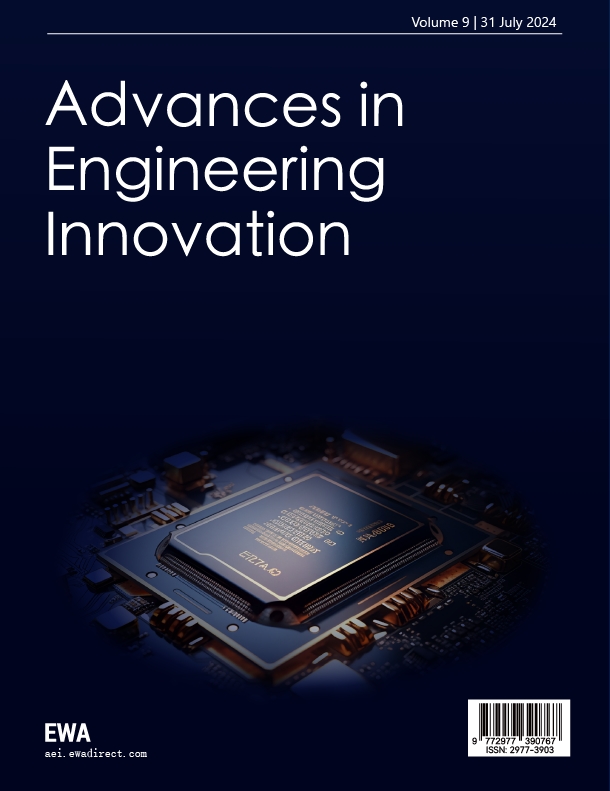References
[1]. Agrawal, A., Gans, J. S., & Goldfarb, A. (2018). Prediction machines: The simple economics of artificial intelligence. Harvard Business Press.
[2]. Brynjolfsson, E., & McAfee, A. (2017). The business of artificial intelligence: What it can—and cannot—do for your organization.Harvard Business Review, 95(4), 3–11.
[3]. Davenport, T. H., & Ronanki, R. (2018). Artificial intelligence for the real world.Harvard Business Review, 96(1), 108–116.
[4]. Dean, J., & Ghemawat, S. (2008). MapReduce: Simplified data processing on large clusters.Communications of the ACM,51(1), 107–113. https: //doi.org/10.1145/1327452.1327492
[5]. Esteva, A., Kuprel, B., Novoa, R. A., Ko, J., Swetter, S. M., Blau, H. M., & Thrun, S. (2017). Dermatologist-level classification of skin cancer with deep neural networks.Nature, 542(7639), 115–118. https: //doi.org/10.1038/nature21056
[6]. Fagnant, D. J., & Kockelman, K. (2015). Preparing a nation for autonomous vehicles: Opportunities, barriers and policy recommendations.Transportation Research Part A: Policy and Practice, 77, 167–181. https: //doi.org/10.1016/j.tra.2015.04.003
[7]. Floridi, L., & Cowls, J. (2019). A unified framework of five principles for AI in society.Harvard Data Science Review, 1(1). https: //doi.org/10.1162/99608f92.8cd550d1
[8]. Gandomi, A., & Haider, M. (2015). Beyond the hype: Big data concepts, methods, and analytics.International Journal of Information Management, 35(2), 137–144. https: //doi.org/10.1016/j.ijinfomgt.2014.10.007
[9]. Goodfellow, I., Bengio, Y., & Courville, A. (2016). Deep learning. MIT Press.
[10]. Heaton, J. B., Polson, N. G., & Witte, J. H. (2017). Deep learning for finance: Deep portfolios.Applied Stochastic Models in Business and Industry, 33(1), 3–12. https: //doi.org/10.1002/asmb.2209
[11]. Jordan, M. I., & Mitchell, T. M. (2015). Machine learning: Trends, perspectives, and prospects.Science, 349(6245), 255–260. https: //doi.org/10.1126/science.aaa8415
[12]. LeCun, Y., Bengio, Y., & Hinton, G. (2015). Deep learning.Nature, 521(7553), 436–444. https: //doi.org/10.1038/nature14539
[13]. Lee, J., Davari, H., Singh, J., & Pandhare, V. (2018). Industrial artificial intelligence for industry 4.0-based manufacturing systems.Manufacturing Letters, 18, 20–23. https: //doi.org/10.1016/j.mfglet.2018.09.002
[14]. Litman, T. (2020). Autonomous vehicle implementation predictions. Victoria Transport Policy Institute.
[15]. McAfee, A., & Brynjolfsson, E. (2012). Big data: The management revolution.Harvard Business Review, 90(10), 60–68.
[16]. Mitra, T., & Gilbert, E. (2014). The language that gets people to give: Phrases that predict success on Kickstarter. In Proceedings of the 17th ACM Conference on Computer-Supported Cooperative Work & Social Computing (pp. 49–61). https: //doi.org/10.1145/2531602.2531656
[17]. Schuh, G., Anderl, R., Gausemeier, J., ten Hompel, M., & Wahlster, W. (2017). Industrie 4.0 maturity index.Acatech Study.
[18]. Tene, O., & Polonetsky, J. (2013). Big data for all: Privacy and user control in the age of analytics.Northwestern Journal of Technology and Intellectual Property, 11(5), 239–273.
[19]. Topol, E. J. (2019). Deep medicine: How artificial intelligence can make healthcare human again. Basic Books.
[20]. Zhang, Y., Sun, Y., Cao, X., & Sun, Y. (2020). Blockchain-based data security management framework for smart cities.Future Generation Computer Systems, 105, 629–640. https: //doi.org/10.1016/j.future.2019.12.020



